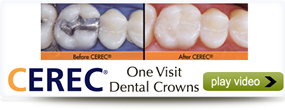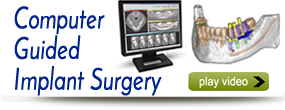DO YOU KNOW what the parts of the human tooth are? We’d like to give you a quick tooth anatomy lesson, because the more patients know about their teeth, the better they will understand the importance of good dental health habits like brushing, flossing, and avoiding sugary treats. We’ll start in the crown and work our way down to the roots.
The Three Layers of the Dental Crown
Everything visible of a tooth above the gums is the crown, and it consists of three layers. Let’s take a closer look at each one.
Enamel
The outermost layer of the tooth is the enamel layer. Tooth enamel is mostly composed of inorganic hydroxyapatite crystals, which make it the hardest substance in the entire body. We need it to be that way so that we can chew a lifetime’s worth of food!
However, because it’s inorganic, enamel can’t repair or replace itself if it is eroded or damaged too much. It’s also extremely vulnerable to acid. That’s why brushing, flossing, cutting back on acidic and sugary foods and drinks, and regular professional cleanings are so important!
Dentin
The next layer of the crown is the dentin, which is very similar to bone. It’s more yellowish than enamel and there’s more of it in adult teeth than baby teeth (if you’ve noticed that brand new adult teeth seem more yellow than baby teeth, that’s why). Microscopic tubules run through the dentin so that the nerves in the center of the tooth can detect temperature changes. When the enamel erodes, these become exposed and cause tooth sensitivity.
The Pulp Chamber
The core of the tooth is the pulp chamber, where the blood vessels and nerves are. The pulp is what makes a tooth alive and how we feel the temperature of our food. It’s also how we feel pain when something’s wrong with the tooth. Don’t ignore tooth pain; it’s the body’s natural warning sign that it’s time to see the dentist!
The Roots of the Teeth
Underneath the gumline are the roots of our teeth, which are longer than the crowns and anchored in the jawbone. They are cushioned and held in place by the periodontal membrane between them and the bone. Roots don’t have enamel to protect them; the gum tissue does that (as long as it’s healthy) and they are coated in a calcified layer called cementum. At the tip of each root is a tiny hole through which blood vessels and nerves can reach the pulp chamber.
Keep Those Teeth Healthy From the Roots to the Crowns!
Every part of the tooth, from the enamel to the pulp, from the crown to the supporting periodontal structures, needs to stay healthy. Keep brushing and flossing to protect the enamel and gums, and don’t forget your regular dental appointments!










